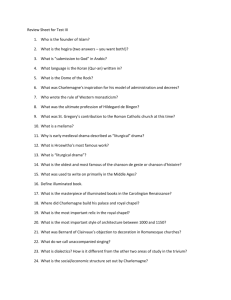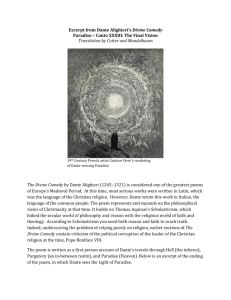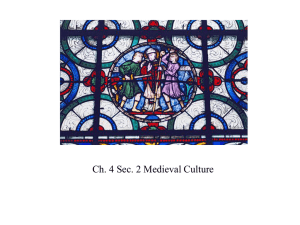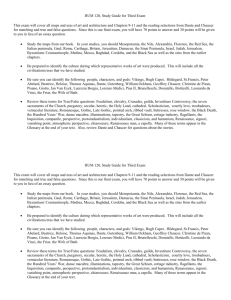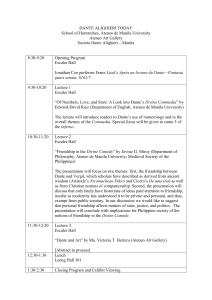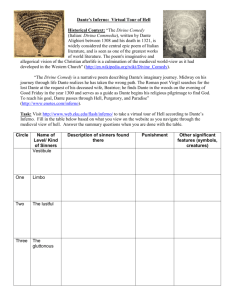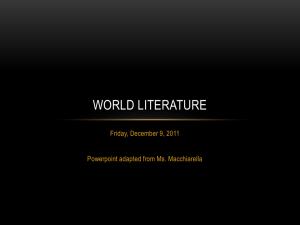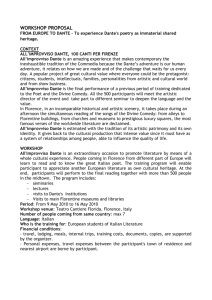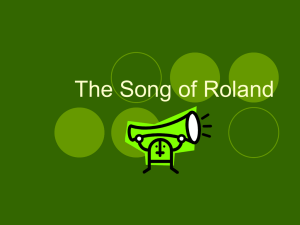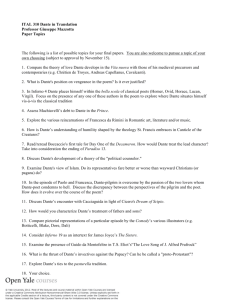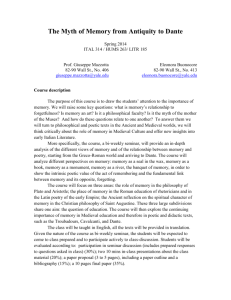The Song of Roland
advertisement
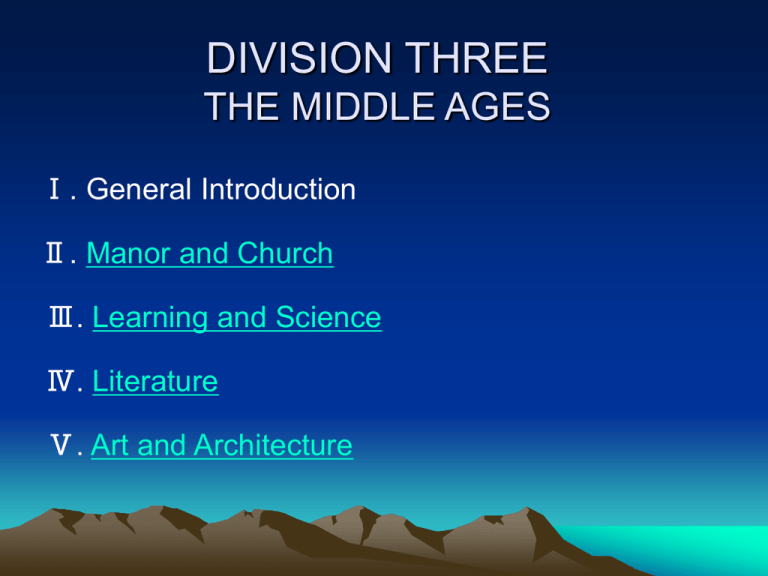
DIVISION THREE THE MIDDLE AGES Ⅰ. General Introduction Ⅱ. Manor and Church Ⅲ. Learning and Science Ⅳ. Literature Ⅴ. Art and Architecture Manor and Church 1. Feudalism 2. The Church 3. The Crusades Feudalism a. Growth of Feudalism b. The Manor c. Knighthood and Code of Chivalry The Church a. The Organization of Church b. Church Fathers and Early Monasticism c. The Power and Influence of the Catholic Church 1. Charlemagne and Carolingian Renaissance • Charlemagne temporarily restored order in western and central Europe and was the most important figure of the early medieval period. • Charlemagne encouraged learning by setting up monastery schools, giving support to scholars and setting scribes to work copying various ancient books. • The result of his efforts is usually called the Carolingian Renaissance. 2. Alfred the Great and Wessex Centre of Learning • Contributing greatly to the medieval European culture • Making Wessex the Anglo-Saxon cultural centre by introducing teachers and scholars • Founding new monasteries and inspiring the compilation of the Anglo-Saxon Chronicles. • Promoting translation into the vernacular from Latin works. 3. St. Thomas Aquinas and Scholasticism • The supreme figure in scholasticism • The medieval philosophical effort to harmonize faith and reason • Summa Contra Ventiles 4. Rogar Bacon and Experimental Science • One of the earliest advocates of scientific research • Calling for careful observation and experimentation • Opus maius Optic studies by Rogar Bacon Literature 1. National Epics 2. Dante Alighieri and The Divine Comedy 3. Geoffery Chaucer and The Canterbury Tales a. Beowulf • Beowulf is an Anglo-Saxon epic, in alliterative verse, originating from the collective efforts of oral literature. • The story is set in Denmark or Sweden and tells how the hero, Beowulf, defeats the monster Grendel and Grendel’s mother, a sea monster, but eventually receives his own death in fighting with a fire dragon. The first page of the Beowulf manuscript b. Song of Roland • Song of Roland is the most well-known of a group of French epics known as La Chanson de Gestes. • It tells how Roland, one of Charlemagne’s warriors, fights in Spain and dies defending a pass in the Pyrenees. Eight phases of The Song of Roland in one picture. Dante Alighieri • Dante Alighieri was the greatest poet of Italy and also a prose writer, literary theorist, moral philosopher as well as political thinker. • The Divine Comedy is the greatest Christian poem with a profound vision of the medieval Christian world, expresses humanistic ideas which foreshadowed the spirit of Renaissance. • It influenced decisively the evolution of European literature away from its origins in Latin culture to a new varied expression. Dante Alighieri Statue of Dante at the Uffizi, Florence. Statue of Dante in the Piazza di Santa Croce in Florence. Mural of Dante in the Uffizi Gallery, by Andrea del Castagno, c. 1450. Dante's tomb in Ravenna, built in 1780. Geoffery Chaucer Engraving of Chaucer from Speght's edition Art and Architecture 1. Romanesque 2. Gothic Gothic Cathedrals
